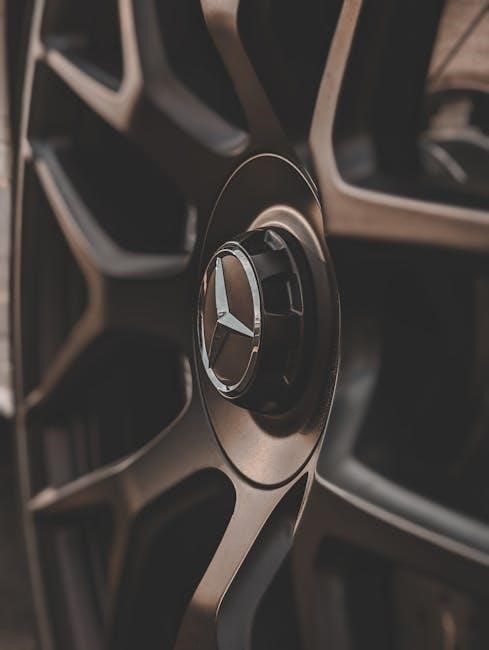Manually rolling up a power window requires patience and some knowledge of the window mechanism, using the window regulator to lift the glass, as explained in online forums and repair guides.
Understanding the Basics of Power Windows
To manually roll up a power window, it is essential to understand the basics of power windows, including the role of the window regulator, motor, and switches. The power window system consists of several components that work together to allow the window to move up and down. The window regulator is a crucial part of the system, as it provides the mechanical advantage needed to lift the heavy glass. Online forums and repair guides provide valuable information on the inner workings of power windows, helping individuals to better understand the system and troubleshoot issues. By grasping the fundamental principles of power windows, individuals can more easily diagnose problems and find solutions, including manually rolling up a stuck window. This knowledge is vital for effective troubleshooting and repair. Understanding the basics is the first step in resolving power window issues.

Troubleshooting Power Window Issues
Troubleshooting involves checking fuses, switches, and motors to identify the problem, using online guides and forums for assistance and guidance always.
Checking Fuses and Electrical Connections
To diagnose power window issues, checking fuses and electrical connections is essential, as a blown fuse can prevent the window from rolling up. The fuse box location can be found in the vehicle’s manual, and checking the fuses is a simple process. Online forums and repair guides provide step-by-step instructions on how to check fuses and electrical connections. It is also important to check the wiring and connections to the power window motor and switch, as damaged or corroded wires can cause the window to malfunction. By checking the fuses and electrical connections, you can identify and potentially fix the problem, allowing you to manually roll up the power window if needed. This step is crucial in troubleshooting power window issues and can help you avoid costly repairs. Regular checks can also help prevent future problems.
Locating the Power Window Mechanism
Locate the power window mechanism behind the door panel, using online guides and diagrams for reference, to access and manually roll up the window easily and safely always.
Removing the Door Panel for Access
To manually roll up a power window, it is often necessary to remove the door panel for access to the window mechanism. This can be done by removing the screws that hold the panel in place, and then gently prying the panel away from the door. It is important to be careful not to damage the panel or the door, as this can be costly to repair. Once the panel is removed, the window mechanism can be accessed and the window can be manually rolled up. The process of removing the door panel can vary depending on the make and model of the vehicle, so it is a good idea to consult a repair manual or online guide for specific instructions. By following these steps, it is possible to manually roll up a power window and regain access to the vehicle.

Manually Rolling Up the Window
Manually rolling up the window involves using the regulator to lift the glass slowly upwards into place securely.
Using the Window Regulator to Lift the Glass
To manually roll up a power window, you will need to use the window regulator to lift the glass, this process requires some patience and care.
The window regulator is a mechanical component that moves the window up and down, it is usually connected to the window motor, but in this case, you will be using it manually.
You will need to locate the regulator and attach it to the window, then use it to slowly lift the glass upwards into place, making sure it is secure and even;
This process can be a bit tricky, but with the right tools and some practice, you should be able to get the hang of it, and have your window rolled up in no time, according to online repair guides and forums.
The key is to be gentle and careful, as you don’t want to damage the glass or the regulator, and to make sure everything is properly aligned and secure.

Common Causes of Power Window Failure
Power window failure is often caused by faulty motors or switches, according to online forums and repair guides, requiring manual intervention to roll up the window safely always.
Diagnosing Faulty Motors and Switches
Diagnosing faulty motors and switches is a crucial step in identifying the cause of power window failure, as explained in online repair guides and forums. The process involves checking the power window main switch and sub switch, as well as the motor itself, to determine if any of these components are malfunctioning. According to some sources, a faulty motor or switch can be replaced with a new one, while others may require more complex repairs. It is essential to consult the vehicle’s service manual or a professional mechanic for guidance on diagnosing and repairing faulty motors and switches. By doing so, individuals can ensure that their power windows are functioning properly and safely. Regular maintenance and inspection of these components can also help prevent future problems and extend the lifespan of the power window system. Proper diagnosis is key to effective repair.

Preventing Future Power Window Problems
Regular maintenance and inspections of power window components can help prevent future issues and ensure smooth operation always.
Regular Maintenance and Inspection of Power Window Components
To prevent power window problems, regular maintenance and inspection of components is crucial, this includes checking the window regulator, tracks and rollers for wear and damage, and ensuring proper lubrication of moving parts.
The power window system consists of several components that work together to raise and lower the window, and regular checks can help identify potential issues before they become major problems.
By following a regular maintenance schedule, you can help extend the life of your power window system and prevent costly repairs, and also ensure your safety on the road.
Regular inspection can also help you identify any signs of wear or damage, and allow you to take corrective action before the problem becomes serious.
This can be done by consulting your vehicle’s manual or online resources for guidance on maintenance and inspection procedures.
